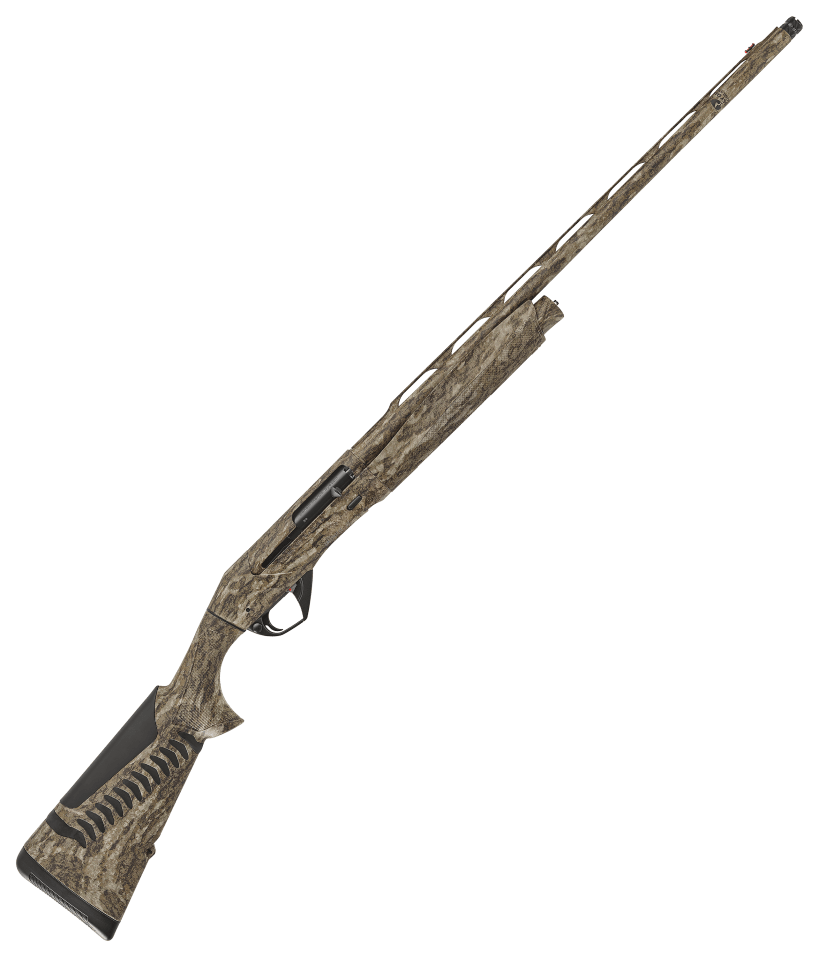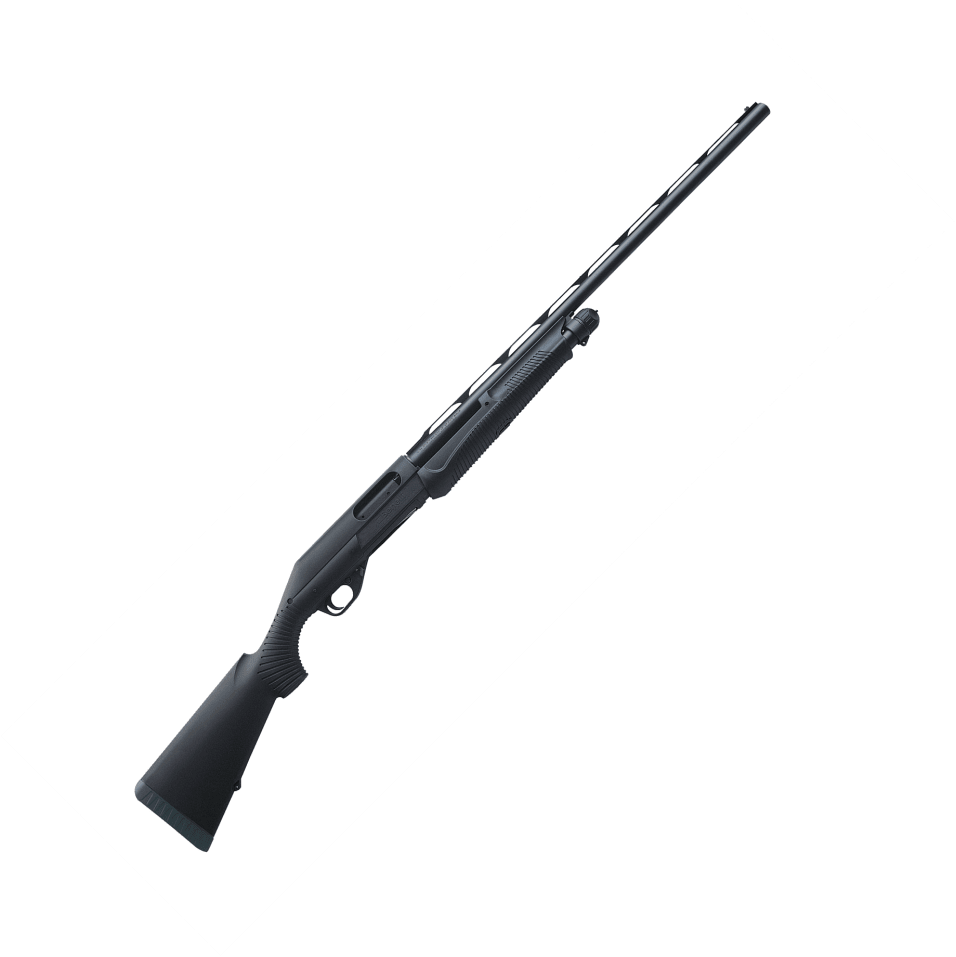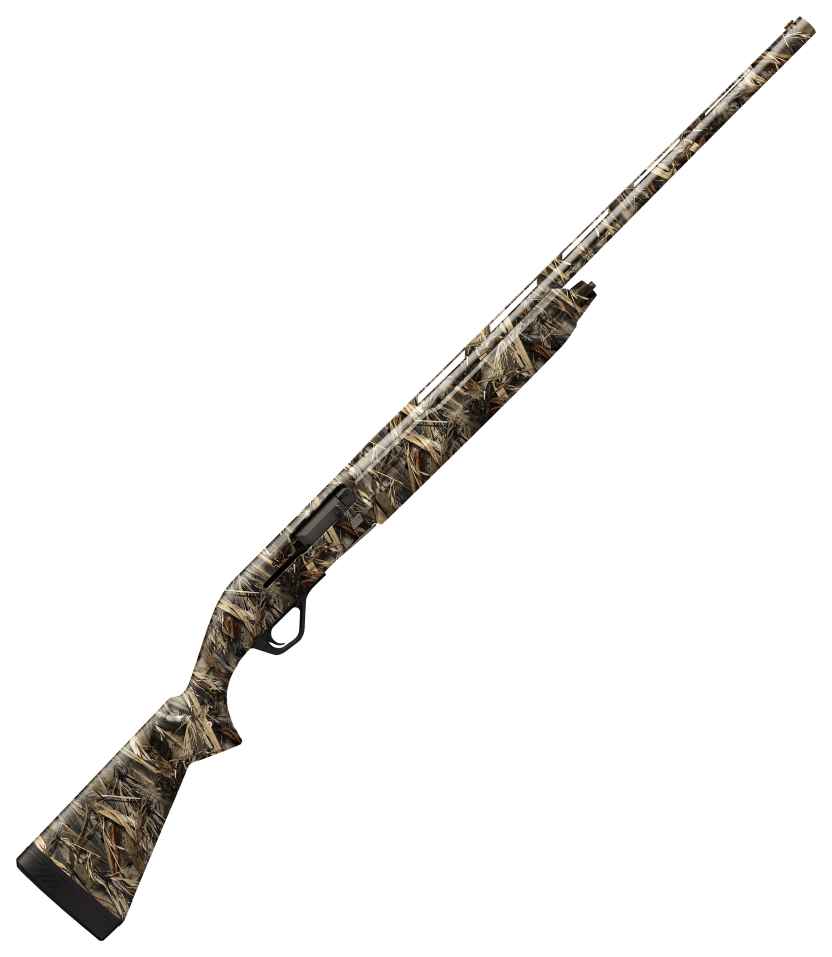
Selecting the right shotgun for waterfowl hunting is more than just a simple purchase; it's about finding a trusted companion that will stand by you in the early morning mist and through the chill of a late-season storm. With so many options available, it's essential to consider factors such as action type, gauge, barrel length, chokes, stock materials, ergonomics, and overall reliability. Each element plays a crucial role in ensuring your shotgun not only fits you perfectly but also performs flawlessly under the challenging conditions you'll face in the field. By understanding these factors, you'll be well-equipped to choose a shotgun that enhances your hunting experience, making each outing both successful and enjoyable.
Shotgun Action for Waterfowl Hunting
Choosing the right shotgun action is like picking the right tool for the job. The action of a shotgun refers to the mechanism by which it loads, fires, and ejects shells. There are three main types of shotgun actions: pump-action, semi-automatic, and break-action. Let's dive into each one.
Pump-Action Shotguns
Pump-action shotguns are the workhorses of the hunting world. They require the shooter to manually cycle the action by sliding the fore-end back and forth. This type is renowned for its reliability and simplicity. When you're out in the marshes, dealing with mud, water, and cold, a pump-action shotgun can be your best friend. It’s less likely to jam, easy to clean, and can handle the rough conditions like a champ.
One of the things I love about pump-actions is their versatility. Whether you're hunting ducks in a flooded timber or geese in an open field, a pump-action can get the job done. The mechanical action is straightforward, and with a little practice, you can cycle rounds pretty quickly. Plus, there's something satisfying about the sound of racking a pump shotgun—it’s like a promise of what's to come.
Semi-Automatic Shotguns
Semi-automatic shotguns use the energy from the fired shell to automatically cycle the action, allowing for quicker follow-up shots. For many waterfowl hunters, this is the go-to choice, and for good reason. When you’re facing a flock of ducks or a gaggle of geese, those rapid follow-up shots can make all the difference. You don’t have to worry about manually cycling the action, which lets you stay focused on your target.
Another advantage of semi-automatics is their ability to handle recoil better. This is particularly useful when shooting heavier waterfowl loads. After a full day of hunting, your shoulder will thank you for choosing a semi-automatic. However, they do require a bit more maintenance to keep them running smoothly. The gas-operated or inertia-driven systems can be more susceptible to dirt and grime, so regular cleaning is essential.
Break-Action Shotguns
Break-action shotguns include single-shot and double-barrel designs, which are generally simpler but have limited shot capacity. These shotguns are often overlooked for waterfowl hunting, but they have their own unique charm. The simplicity of a break-action is unparalleled—there are fewer moving parts, which means fewer things can go wrong.
For those who enjoy the tradition and elegance of hunting, a double-barrel shotgun can be a joy to use. The two shots you have are all about precision and making each one count. While they might not be the first choice for every waterfowler, they can be a fantastic option for specific situations, like when you know you'll have close, clean shots.
Field Conditions
The environment you’ll be hunting in plays a significant role in your choice of shotgun action. If you're hunting in wet, muddy conditions, a pump-action might be your best bet due to its inherent reliability and ease of cleaning. Pump-actions can handle the grit and grime of the marsh without skipping a beat.
On the other hand, if you're hunting in more controlled environments, like flooded timber or open fields where you have less concern about severe dirt and moisture, a semi-automatic can shine. The ability to fire quick follow-up shots without the need to manually cycle the action can be invaluable when a flock of ducks suddenly appears.
Choosing the best Action
In my experience, the best shotgun action for waterfowl hunting is typically the semi-automatic. The rapid follow-up shots can be crucial when hunting fast-moving waterfowl. You’ll appreciate the ability to stay on target without the need to manually cycle the action. Additionally, semi-automatics generally handle recoil better, which is a big plus when you're shooting those heavier loads needed to take down larger birds.
That said, don’t discount the pump-action. Its reliability and ease of maintenance make it a strong contender, especially in the harsh, wet conditions often encountered in waterfowl hunting. If you’re new to the sport or on a budget, a pump-action shotgun can be an excellent starting point.
Ultimately, the best shotgun action for you will depend on your personal preferences and hunting style. Each type has its own strengths, and part of the joy of hunting is finding the gear that works best for you. Here's a closer look at some additional considerations to help you make an informed decision.
Hunting Style
Your hunting style is another critical factor. If you prefer a more methodical approach, setting up decoys and waiting for the perfect shot, a semi-automatic can provide the firepower and ease of use you need. You'll be ready for those unexpected moments when multiple birds come into your spread.
For those who enjoy the challenge and tradition of upland hunting or jump-shooting, where you might be walking and flushing birds, a pump-action shotgun can be ideal. The manual cycling can be part of the rhythm of your hunt, and the reliability can give you confidence in every shot.
Budget and Maintenance
Let’s talk about budget. Pump-action shotguns are generally more affordable than semi-automatics. They’re a great entry point for new hunters or those looking to add a reliable, no-fuss shotgun to their collection. Semi-automatics, while more expensive, offer advanced features and performance that can enhance your hunting experience.
Maintenance is another consideration. Semi-automatics require regular cleaning to ensure they function correctly, especially in harsh conditions. If you’re someone who doesn’t mind taking the time to clean and maintain your gear, then this won’t be an issue. However, if you prefer a more low-maintenance option, the simplicity of a pump-action or break-action shotgun might be more appealing.
Personal Preference
At the end of the day, personal preference plays a huge role. Spend some time handling different types of shotguns to see what feels right. Go to a range and try shooting a few rounds with different actions. Pay attention to how each one feels when you shoot, how it handles recoil, and how quickly you can get back on target.
Shotgun Gauge for Waterfowl Hunting
When it comes to waterfowl hunting, the gauge of your shotgun can make a significant difference in your overall experience and success. The gauge refers to the diameter of the bore, and it’s a crucial factor in determining the shotgun's power, versatility, and suitability for different types of waterfowl.
12-Gauge Shotguns
The 12-gauge shotgun is the workhorse of the waterfowl hunting world. Its widespread popularity stems from its incredible versatility and the wide variety of loads available. Whether you’re setting up a decoy spread for ducks or pass-shooting geese at a distance, a 12-gauge can handle it all.
One of the biggest advantages of a 12-gauge shotgun is its power. It offers the punch needed to take down larger waterfowl like geese, which require more knockdown power due to their size and resilience. With a 12-gauge, you have the flexibility to choose from a broad spectrum of loads, from lighter shot for ducks to heavier magnum loads for geese. This versatility means you can adapt to different hunting scenarios without needing to switch guns.
Another benefit of the 12-gauge is its ability to handle a variety of chokes, which allows you to tailor your shot pattern to the specific conditions and distances you'll be encountering. Whether you're shooting over decoys at close range or taking longer shots at passing birds, the 12-gauge can be configured to maximize your effectiveness.
Beretta A300 Ultima Semi-Auto Shotgun
Hunters will appreciate the upgrades to the latest addition to the Beretta® A300 lineup. The field-ready Beretta A300 Ultima Semi-Auto Shotgun has a larger bolt handle and release, and improved low-profile receiver with oversized loading port for enhanced ease of use. Kick-Off recoil reduction system increases shooting stability, comfort, and control for fast target acquisition. Rely on the large 4mm fiber optic in the standard Beretta-thread-pitch housing for high visibility in low-light conditions.
Shop Now20-Gauge Shotguns
The 20-gauge shotgun is often seen as the little brother to the 12-gauge, but don’t let that fool you—it’s a highly capable firearm in its own right. One of the standout features of a 20-gauge is its lighter weight and reduced recoil. This makes it an excellent choice for hunters who may be more sensitive to recoil or for those long days in the field when a lighter gun can help reduce fatigue.
While the 20-gauge may not have the same power as a 12-gauge, it’s still more than adequate for smaller waterfowl like teal and wood ducks. The reduced recoil also makes it easier to stay on target for follow-up shots, which can be crucial during those frenzied moments when multiple birds are in the air.
The 20-gauge can be particularly advantageous for younger or smaller hunters who might find the heft and kick of a 12-gauge to be a bit much. It allows them to participate fully in the hunt without being overpowered by their equipment.
Benelli Super Black Eagle 3 Semi-Auto Shotgun
The Benelli® Super Black Eagle® 3 Semi-Auto Shotgun using the same basic technology as the previous SBE lines, incorporating elements that enhance recoil management, ergonomics, and functionality. The SBE 3 features the Comfort Tech 3 butt stock, with optimized chevron size and location; and a newly developed cheek pad, Combtech™, which greatly reduces facial impact and vibrations. An included shim kit allows up to 8 different cast and drop configurations, and a new stock and fore end design and rounded trigger give the SBE3 a smoother feel that allow you to shoulder the gun quickly and swing fluidly on passing targets.
Shop NowChoosing the Right Gauge
When deciding between a 12-gauge and a 20-gauge, consider the type of waterfowl you'll be hunting and the typical conditions you'll face. If you're primarily targeting larger birds like geese or hunting in open areas where longer shots are common, the 12-gauge is likely your best bet. Its power and versatility make it the standard choice for most waterfowl hunters.
However, if your focus is on smaller ducks or you prefer a lighter, easier-to-handle gun, the 20-gauge can be a fantastic option. It provides sufficient power for most waterfowl hunting situations while offering a more comfortable shooting experience.
Shotgun Stock & Finish for Waterfowl Hunting
Selecting the right stock and finish for your shotgun is a crucial aspect of preparing for waterfowl hunting. The stock is the part of the shotgun that rests against your shoulder, and it greatly influences the gun's comfort, durability, and overall performance. The finish protects the shotgun from the elements, ensuring it stays in top condition season after season. Let’s break down the different options and their advantages.
Wood Stocks
Wood stocks offer a traditional look and feel that many hunters appreciate. There's something undeniably classic about the warmth and beauty of a finely crafted wooden stock. The natural grain and texture can make each shotgun unique, adding a touch of elegance to your hunting gear.
However, wood stocks have their drawbacks, especially in the wet, muddy, and often harsh conditions typical of waterfowl hunting. Wood can be susceptible to swelling, warping, and other weather-related damage. Even with modern protective finishes, prolonged exposure to moisture can degrade the integrity of a wooden stock. For those who cherish the aesthetics and feel of wood, it’s crucial to be diligent about maintenance and care, ensuring the stock is properly sealed and dried after each hunt.
Stevens by Savage Model 555 Silver Over/Under Shotgun
Savage® has earned a reputation for producing economical, well-built arms, and that tradition continues with the Stevens Model 555 Silver Over/Under Shotgun. The 555 is made with a lightweight aluminum-alloy receiver with a steel insert centered right over the firing pin holes that reinforces the standing breech to handle any load. The barrels are made from carbon steel, chrome lined for enhanced pattern uniformity, and are topped with a ventilated rib with 1 brass bead front sight.
Shop NowSynthetic Stocks
Synthetic stocks are a popular choice for waterfowl hunters due to their durability and resistance to the elements. Made from materials like polymer or fiberglass, synthetic stocks are impervious to water, meaning they won’t swell, warp, or crack when exposed to moisture. This makes them ideal for hunting in wet environments, whether you’re wading through marshes or setting up in a rainy blind.
Another advantage of synthetic stocks is their resilience to rough handling. They can withstand bumps, scratches, and drops far better than wood, making them a practical option for hunters who are hard on their gear. Synthetic stocks are also typically lighter, which can make a significant difference during long hunts where every ounce counts.
Benelli Nova Pump-Action Shotgun
The Benelli Nova® is an innovatively designed pump-action shotgun made from hi-tech materials. The Nova is an ultra reliable, nearly indestructible pump shotgun that's ideal for all-round rugged use. Benelli constructs the Nova with corrosion-proof polymer over-molded on a skeleton framework to form single-piece receiver and buttstock for unsurpassed strength and weather resistance.
Shop NowComposite Stocks
Composite stocks combine the best of both worlds, offering the durability of synthetic materials with the aesthetic appeal of wood. These stocks often feature a core of synthetic material covered with a wood veneer or laminate. This construction provides the strength and weather resistance of synthetic stocks while maintaining the traditional look of wood.
Composite stocks can be an excellent choice for hunters who want the reliability of modern materials without sacrificing the classic appearance of their shotgun. They offer a good compromise, blending durability with style.
Finishes
The finish of your shotgun is just as important as the stock material, as it protects the firearm from rust and corrosion while also reducing glare. Two common finishes are camo and matte coatings.
Camo Finish
A camo finish helps the hunter remain concealed, blending the shotgun into the natural surroundings. This can be particularly advantageous when hunting wary waterfowl that are quick to spot potential threats. A good camo finish also includes a protective layer that shields the metal parts of the shotgun from rust and corrosion caused by exposure to water and humidity.
Winchester SX4 Waterfowl Hunter Semi-Auto Shotgun in TrueTimber DRT
The Winchester® SX4® Waterfowl Hunter Semi-Auto Shotgun has improved ergonomics over the previous SX3 model, being slimmer and lighter, with a slightly forward balance point for fluid swinging and follow through. Larger, redesigned operating controls (safety, bolt handle, and bolt release) and a larger trigger guard facilitate getting on target quickly, as well as safe operation. This SX4 Waterfowl Hunter comes in full-coverage TrueTimber® DRT (Dead Right There) featuring a contrast of brown and gray, dark enough to blend into swamps and wetlands, with just enough yellow coloration for cattails and CRP fields.
Shop NowMatte Finish
A matte finish reduces glare, which can be a significant factor when hunting in bright conditions. Glare from a shiny shotgun can spook birds, making a matte finish a practical choice for stealth. Like camo finishes, matte coatings also provide a layer of protection against the elements.
Best Stock & Finish for Waterfowl Hunting
For waterfowl hunting, a synthetic stock with a camo finish is often the best choice. Synthetic stocks are durable, weather-resistant, and can withstand the harsh conditions typical of waterfowl hunting environments. They provide peace of mind, knowing your shotgun will perform reliably regardless of the weather.
A camo finish not only aids in concealment but also offers robust protection against rust and corrosion. This combination ensures that your shotgun remains functional and effective, even after prolonged exposure to moisture and rough handling.
Final Thoughts
Selecting the right shotgun for waterfowl hunting is a multifaceted decision that goes beyond mere aesthetics and brand names. It's about finding a firearm that fits your body, meets your hunting style, and performs reliably under the varied conditions you'll encounter in the field. From the action type and gauge to barrel length, chokes, and the material and finish of the stock, each component plays a crucial role in your overall hunting success.
When choosing a shotgun, consider how each feature aligns with your specific needs. A semi-automatic shotgun might be ideal for those who value rapid follow-up shots and reduced recoil, while a pump-action could be the best choice for hunters who prioritize reliability and ease of maintenance in harsh conditions. Similarly, while a 12-gauge offers unmatched versatility and power, a 20-gauge provides a lighter, more manageable option for those sensitive to recoil or hunting smaller waterfowl.
The stock and finish of your shotgun are equally important. A synthetic stock with a camo finish is often the best choice for waterfowl hunting, offering durability, weather resistance, and concealment. However, if you cherish the traditional feel of wood, it's essential to be diligent about maintenance to protect it from the elements.
Ultimately, the perfect shotgun is one that feels like an extension of yourself. Spend time handling different models, test them at the range, and seek advice from fellow hunters to make an informed decision. With the right shotgun in your hands, you're well-equipped to face the challenges of waterfowl hunting, ensuring each outing is not only successful but also enjoyable. Happy hunting, and may your days in the field be filled with unforgettable moments and true shots.
- 6664 views






